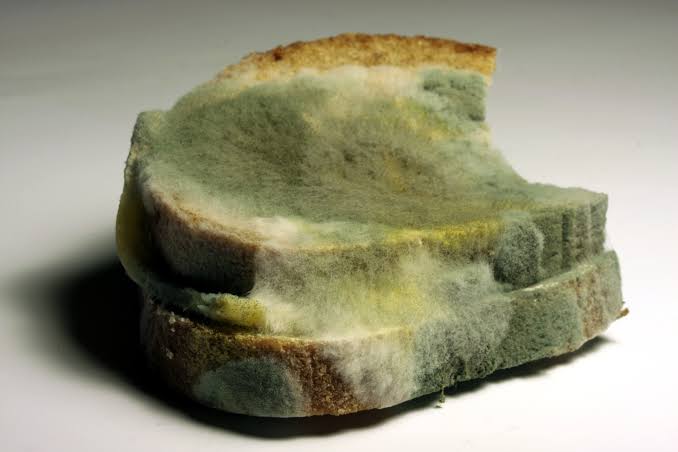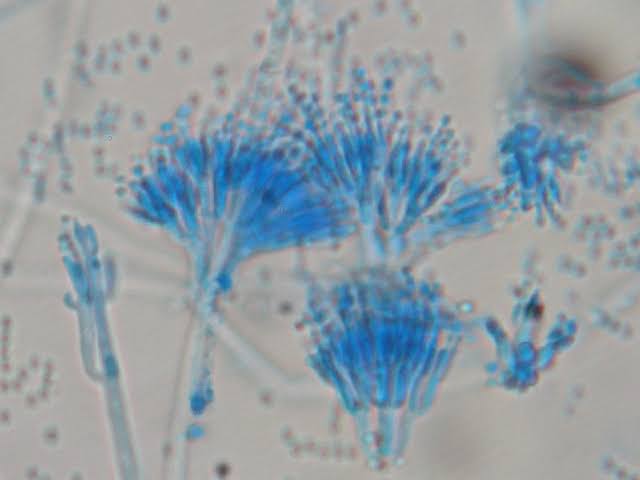Penicillium is a genus of saprophytic (feeding on dead and decaying materials) fungi. They are commonly known as blue or green mould. They are economically important for the production of cheese, organic acids and antibiotics. They play an important role as a decomposer in the ecosystem. Penicillium can be found at various places such as soil, air, on decaying food, etc. Penicillin is one of the most important antibiotics extracted from Penicillium sp.
Download Complete Chapter Notes of Biological Classification
Download Now
Table of Contents:

Classification and Examples
Penicillium is a genus under phylum Ascomycota or Ascomycetes. They are classified by the production of ascospores during sexual reproduction.
Penicillium means “painter’s brush”. They are named so, due to the presence of chains of conidia (produced asexually) appearing as a brush terminally on mycelia.
| Domain | Eukaryota |
| Kingdom | Fungi |
| Phylum | Ascomycota |
| Class | Eurotiomycetes |
| Order | Eurotiales |
| Family | Trichocomaceae |
| Genus | Penicillium |
Some common species of Penicillium include:
Penicillium notatum
Penicillium chrysogenum
Penicillium camemberti
Penicillium claviforme
Penicillium echinulatum
Penicillium glaucum
Penicillium roqueforti
Structure with Diagram

- The vegetative structure of Penicillium is a multicellular mycelium
- The mycelium is made up of highly branched, multinucleated and septate long thread-like filamentous structure known as hyphae
- The cell wall is made up of a glucose polysaccharide and chitin
- The cytoplasmic continuity is maintained through central pore, present in the septa
- Conidiophores are present at the branch ending along with spherical conidiospores, which are asexual spores produced exogenously
- Conidia are produced in the basipetal succession, i.e. the youngest conidium is present at the base
- Conidia are produced from the specialised cells called phialide, present in the group and give a brush-like appearance to the fungus
- Ascospores are found in asci arranged in ascocarps, which are sexual spores produced endogenously
- Some of the mycelia grow deeper into the substratum to derive food
- The food is stored in the form of oil globules
Reproduction and Life Cycle
Penicillium reproduce by all the three processes, i.e. vegetative, asexual and sexual
Vegetative reproduction is by fragmentation and each of the fragments develops separately, making a complete mycelium
Asexual reproduction takes place in the special structures called conidiophore.
- Conidiophores may be unbranched or branched and differentiate into metulae
- Number of flask-shaped phialide cells develop at the end of each metulae, which form conidia
- Phialide cells divide mitotically forming a conidium. Phialide cells again divide pushing the first conidium towards outside and the second conidium is formed. This process repeats resulting in a chain of conidia, found in a basipetal succession
- The conidia may be blue, green or yellow in colour and oval or elliptical in shape
- Conidia get detached from the parent after maturation and dispersed by the wind
- They get attached to a suitable substratum and germinate
- Germination is by the germ tube formation. The nucleus divides mitotically multiple times. All the nuclei enter the germ tube and followed by the elongation and formation of septa to give rise to a mature and branched mycelium
Sexual reproduction is by the formation of ascospores
- Some species of Penicillium are homothallic and some are heterothallic (male and female sex organs present on different thallus)
- The male and female sex organs are antheridium and ascogonium respectively
- One of the cells of the vegetative mycelium develops into ascogonium, which is unicellular having a single nucleus. The nucleus of ascogonium undergoes repeated division to produce 32 to 64 nuclei
- The developing antheridium branch coils around the ascogonium and the apical part of it is separated by septa forming a unicellular antheridium having a single nucleus
- After maturation, antheridium bends and touches the ascogonial wall and at the point of contact, cell wall dissolves and cytoplasm of both the cells get intermixed. The process is known as plasmogamy
- There occurs an intermediate dikaryon phase, which is a dikaryotic stage with 2 nuclei (n+n) present in the cell
- The ascogonium repeatedly divide by partition of the wall forming many binucleate cells arranged one above another
- The terminal dikaryotic cell swells up forming ascus mother cell
- Karyogamy (fusion of the two nuclei) occurs in the cell forming diploid cell (2n)
- The diploid zygote undergoes first meiosis and then mitosis to form 8 nuclei. Each accumulates some cytoplasm resulting in the formation of 8 ascospores
- The ascospores are released by the dissolution of ascus wall and get attached to a suitable substratum
- The ascospores develop by forming a germ tube and mature into the branched mycelium
Economic Importance
Penicillium species are very important economically. They produce many food products, organic acids, antibiotics and mycotoxins.
- Cheese production- many Penicillium species are used in the production of different kinds of cheese, e.g. blue cheese, P. camemberti forms Camembert and Brie cheese and P. roqueforti forms Roquefort cheese
- Enzymes and Organic acid production- many Penicillium species are used in the production of organic acids such as citric acid, gluconic acid, tartaric acid and enzymes like amylases, proteases, cellulase, lipase and pectinase
- Antibiotic (Penicillin) production- In 1929 Alexander Fleming isolated the antibiotic Penicillin from penicillium, which inhibited the growth of Gram-positive bacteria. Later Florey and Chain extracted and produced Penicillin from the moulds to treat soldiers of the World War II
Penicillin is produced by Penicillium chrysogenum (earlier known as Penicillium notatum). The naturally occurring penicillins are Penicillin G (Benzylpenicillin), which is given by intramuscular injection and Penicillin V (Phenoxymethylpenicillin) given orally to treat various infections.
Penicillin act by inhibiting enzymes responsible for the cell wall formation of bacteria and activating enzymes responsible for the breakdown of the protective wall of the bacteria.
-
- Penicillium species are also used in the production of antifungal drug and tumour suppressing compounds
- Penicillium species are also used in mycoremediation, i.e. bioremediation process using fungus to clean the environment due to their ability to breakdown xenobiotic compounds
Frequently Asked Questions
What is Penicillium used for?
Penicillium is a genus of fungi. Some of the species are used to get penicillin, which is an antibiotic used for bacterial infection. Some of the species are also used in cheesemaking, enzymes and organic acid production. It is also used for the bioremediation process.
Is Penicillium harmful or beneficial?
Penicillium is one of the most common fungi. It is both beneficial as well as harmful. Some of the species are used for the production of antibiotics, cheese, organic acids and enzymes. Some of the species are beneficial for plants, as they supply nutrients and increase the tolerance of host plants to salinity, drought and other environmental stresses. Some of the species are known to have harmful effects such as spoilage and can cause food-borne diseases.
What disease is caused by Penicillium?
Penicillium species can cause various diseases in humans such as keratitis, otomycosis, urinary tract infections, allergic pulmonary disease, peritonitis, pneumonia, etc.
Is Penicillium black mold?
Penicillium is a genus of blue-green fungi.
Which class does Penicillium belong to?
Penicillium belongs to the class Eurotiomycetes of the phylum Ascomycota.
Also Check:
NEET Flashcards: The Living World
NEET Flashcards: Biological Classification
NEET Flashcards: Plant Kingdom
NEET Flashcards: Morphology Of Flowering Plants
NEET Flashcards: Anatomy Of Flowering Plants
Watch the video below to learn about reproduction in fungi.


Comments